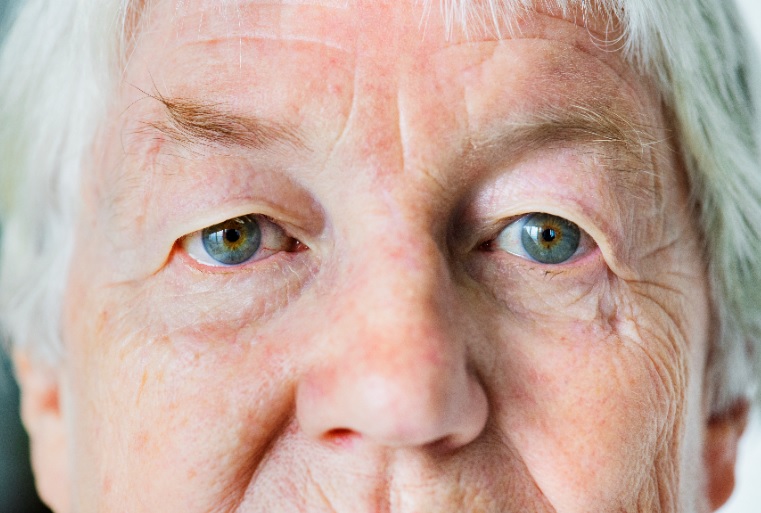Are wrinkles just an inevitable consequence of ageing, or could they signal something more sinister? According to research presented in Munich today at the ESC Congress 2018, the annual conference of the European Society of Cardiology (1), people who have lots of deep forehead wrinkles, more than is typical for their age, may have a higher risk of dying of cardiovascular disease (CVD).
Assessing brow wrinkles could be an easy, low-cost way to identify people in a high-risk category for CVD.
“You can’t see or feel risk factors like high cholesterol or hypertension,” says study author Yolande Esquirol, associate professor of occupational health at the Centre Hospitalier Universitaire de Toulouse in France. “We explored forehead wrinkles as a marker because it’s so simple and visual. Just looking at a person’s face could sound an alarm, then we could give advice to lower risk.”
That advice could include straightforward lifestyle changes like getting more exercise or eating healthier food. “Of course, if you have a person with a potential cardiovascular risk, you have to check classical risk factors like blood pressure as well as lipid and blood glucose levels, but you could already share some recommendations on lifestyle factors,” Dr Esquirol points out.
Risk of heart disease increases as people age, but lifestyle and medical interventions can mitigate the danger. The challenge is in identifying high-risk patients early enough to make a difference.
According to the study authors, previous research has analysed different visible signs of ageing to see if they can presage cardiovascular disease. In prior studies, crow’s feet showed no relationship with cardiovascular risk but these tiny wrinkles near the eyes are a consequence not just of age but also of facial movement. A link has been detected between male-pattern baldness, earlobe creases, xanthelasma (pockets of cholesterol under the skin) and a higher risk of heart disease, but not with an increased risk of actually dying (2).
The authors of the current prospective study investigated a different visible marker of age – horizontal forehead wrinkles – to see if they had any value in assessing cardiovascular risk in a group of 3,200 working adults. Participants, who were all healthy and were aged 32, 42, 52 and 62 at the beginning of the study, were examined by physicians who assigned scores depending on the number and depth of wrinkles on their foreheads. A score of zero meant no wrinkles while a score of three meant “numerous deep wrinkles.”
The study participants were followed for 20 years, during which time 233 died of various causes. Of these, 15.2% had score two and three wrinkles. 6.6% had score one wrinkles and 2.1% had no wrinkles.
The authors found that people with wrinkle score of one had a slightly higher risk of dying of cardiovascular disease than people with no wrinkles. Those who had wrinkle scores of two and three had almost 10 times the risk of dying compared with people who had wrinkle scores of zero, after adjustments for age, gender, education, smoking status, blood pressure, heart rate, diabetes and lipid levels,
“The higher your wrinkle score, the more your cardiovascular mortality risk increases,” explains Dr Esquirol.
Furrows in your brow are not a better method of evaluating cardiovascular risk than existing methods, such as blood pressure and lipid profiles, but they could raise a red flag earlier, at a simple glance.
The researchers don’t yet know the reason for the relationship, which persisted even when factors like job strain were taken into account, but theorise that it could have to do with atherosclerosis, or hardening of the arteries due to plaque build-up. Atherosclerosis is a major contributor to heart attacks and other cardiovascular events.
Changes in collagen protein and oxidative stress seem to play a part both in atherosclerosis and wrinkles. Also, blood vessels in the forehead are so small they may be more sensitive to plaque build-up meaning wrinkles could one of the early signs of vessel ageing.
“Forehead wrinkles may be a marker of atherosclerosis,” says Dr Esquirol.
“This is the first time a link has been established between cardiovascular risk and forehead wrinkles so the findings do need to be confirmed in future studies,” cautions Dr Esquirol, “but the practice could be used now in physicians’ offices and clinics.”
“It doesn’t cost anything and there is no risk,” concluded Dr Esquirol.
###
Media Contact
ESC Press Office
[email protected]
@escardio
http://www.escardio.org





